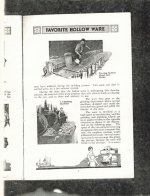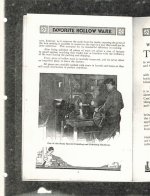I know ci is very hard but can it be sanded down or polished?
---------- Post added at 01:14 AM ---------- Previous post was at 12:11 AM ----------
Somewhat related, actually this is why I asked the above question, I love Conecuh sausage and eggs. If I cook my eggs first, they'll slide around the pan like nothing, but if i cook sausage first, they stick to the pan. I know this doesn't make much sense, and after a hot water bath and a lite coat of oil, the pan is back to "sliding egg" status.
Figure polishing the surface would stop the sausage from grabbing anything protruding on the microscopic level? It's an old unmarked Lodge #8 that I use pretty much daily and really seems smooth to the touch.
---------- Post added at 01:14 AM ---------- Previous post was at 12:11 AM ----------
Somewhat related, actually this is why I asked the above question, I love Conecuh sausage and eggs. If I cook my eggs first, they'll slide around the pan like nothing, but if i cook sausage first, they stick to the pan. I know this doesn't make much sense, and after a hot water bath and a lite coat of oil, the pan is back to "sliding egg" status.
Figure polishing the surface would stop the sausage from grabbing anything protruding on the microscopic level? It's an old unmarked Lodge #8 that I use pretty much daily and really seems smooth to the touch.


